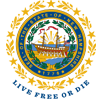D.A.R.E FAQs
Frequently asked questions about D.A.R.E.
What does D.A.R.E. stand for?
Drug Abuse Resistance Education.
Does the D.A.R.E. Program just teach my children to say "no"?
The new D.A.R.E. Program, revised in 2008, is a life skills program that teaches students to go through the steps of making decisions. The steps are:
- Define – what is the problem or choice?
- Assess – what are my choices and the consequences?
- Respond – make a decision, and
- Evaluate – would I make the same choice, should I be faced with that decision again?
Who teaches D.A.R.E.?
A uniformed police officer teaches D.A.R.E.
Why a uniformed police officer?
D.A.R.E. has a triangle of people who are very important to the success of the program. Within the community the police, schools and parents working together produce the best success with the students. A police officer deals directly with the people in the area and he/she can draw from real life examples of how drugs can ruin a life. The police officer sees first hand the destructive nature of drugs and the importance of staying drug free. Also, the students see that the police officer is a human being and that members of the police do care about them. It reinforces the fact that if the student is in trouble, the police are there to help.
What grade does it go up to?
D.A.R.E. is a comprehensive program that has lessons for the students in kindergarten through high school and there is also a parent program. The kindergarten program is a one-time visitation that introduces the police officer to the students and tells them that we are there to keep them safe. The first or second grade is a four lesson program that focuses on safety issues, stranger danger, good touch/bad touch, etc. The third or fourth grade program is a five lesson program that talks more about safety and introduces assertively saying no to offers of drugs or harmful behavior. The fifth or sixth grade program is ten weeks and it is the program that most D.A.R.E. students have. When most people think about D.A.R.E they are familiar with the fifth grade program. The seventh or eighth grade program, also ten lessons, addresses more about decision making and goes more in depth of what the drugs can actually do to the human body. The ninth or tenth grade program talks about law and consequences and is an interactive class with the classroom teacher. There is also a parent program available to educate parents about how to recognize the signs of drug use and how to talk with their children.
Are there any materials available for parents about how to talk to their children?
The first step is to be involved in their students D.A.R.E. program. Ask questions about the lessons and that will provide some good discussion points. There is a parent section available on the D.A.R.E. America Web site. This section gives parents tools to talk to children and signs and symptoms of drug use. It is a great resource for parents to use.
How do you become a D.A.R.E. officer?
A full-time certified police officer with two years of patrol experience can apply to become a D.A.R.E. officer. The officer will go through an oral board. If the officer passes the board, he/she is then invited to attend a very intense two week D.A.R.E. Officer Training (DOT). This school is very intense and is one of the toughest law enforcement classes going. Once certified as a D.A.R.E. Officer, the certification is recognized world-wide.
I heard that D.A.R.E. is fading out; is this true?
On the contrary, D.A.R.E. is the largest drug prevention program in the world. It is in 54 countries world-wide and is growing all the time. The new curriculum has given new life to D.A.R.E. and the numbers are growing. In New Hampshire in 2019, the program was presented in 80 NH communities; the K-4, elementary, and middle school program was delivered to over 12, 000 students. There are currently 125 D.A.R.E. officers in the state.
Is D.A.R.E. ever updated?
D.A.R.E. is constantly being evaluated and updated as necessary to keep up with current trends.



